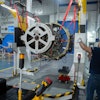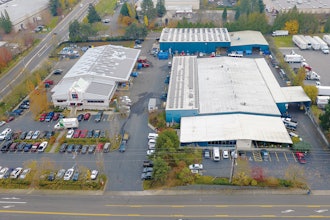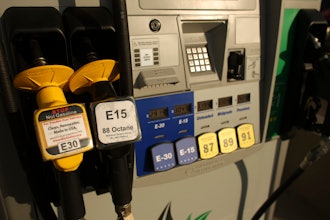HOUSTON (AP) -- Fatigue, improper communication and other distractions -- including a pilot reading a newspaper while navigating a large vessel through a narrow channel -- contributed to a ship collision last year between a tanker and a towboat that sparked the largest Texas oil spill in more than 20 years, federal transportation investigators said Tuesday.
"I don't think that's the professional behavior we expect of people. He's not there to read the paper," said Robert Sumwalt, a member of the National Transportation Safety Board. "The pilots were not acting as a team. They were acting as two individuals who happened to be onboard the same ship."
Communication guidelines set up by the local pilots' association that oversees the waterway and licensing were not followed on the morning of the collision, investigators said.
The investigators, however, were pleased with the cleanup activities that they said were so well-coordinated and efficient they successfully prevented the 462,000 gallon oil spill from fouling a pristine natural area and killing more than just a few marine birds. They said lessons learned from previous accidents and spills were properly applied, preventing a repeat of past problems or mistakes.
The NTSB is meeting in Washington to release its final report on the Jan. 22, 2010, collision in Port Arthur of the tanker Eagle Otome and towboat Dixie Vengeance. The collision breached the tanker, causing the oil to spill into the Sabine-Neches Ship Channel. The spill shut down the busy waterway for five days. No people were hurt.
The spill was the largest in Texas since 1990, when a Norwegian tanker spilled 4.3 million gallons about 60 miles off Galveston. The state typically has about 800 spills a year, but nearly all involve less than one barrel of oil, according to the Texas General Land Office.
Early on the morning of the accident, there was poor visibility and high winds, but the investigators have not mentioned either as factors in the crash. Instead, they believe the first pilot's untreated sleep disorder combined with an irregular work schedule made him so fatigued that he was unable to effectively center the ship in the waterway.
The investigators also mentioned that the design of the ship's steering console was unusual and it is possible the pilots could have inadvertently sped up when they meant to slow down and vice versa.
Testimony and evidence presented at Coast Guard hearings indicated the pilots of both vessels were aware they were close to each other, but audio recordings and testimony indicate they initially thought they would be able to pass one another safely. Moments before the collision, they had a calm conversation and even shared an off-color joke.
But Capt. Pallava Shukla, master of the Eagle Otome tanker that morning, testified he became increasingly concerned about the ship's situation. Visibility, Shukla testified, was "very, very" poor and he noticed at one point that the ship was turning too sharply and tried to help the pilot correct the angle.
There were two pilots aboard the tanker, as is mandatory when maneuvering such ships through the narrow waterway. One pilot, Capt. Charles Bancroft, testified that he told the tugboat he was heading toward a bridge.
Bancroft said the weather initially appeared normal, but that the forces in the channel turned out to be some of the strongest he'd faced. Maneuvers that had worked previously -- increasing rudder speed and pushing the engine to increase water flow around the ship -- didn't work this time, Bancroft said.
Finally, when it became clear the tanker was getting too close to the tugboat, Bancroft said he ordered the engine stopped and the anchor thrown -- a last ditch effort to bring the ship to a sudden stop and prevent the collision. After giving the order, Bancroft said he went outside to see how close they were to the tugboat. People were yelling and running around, he said.






















